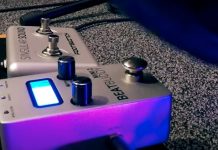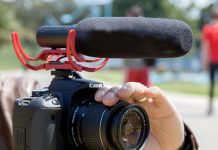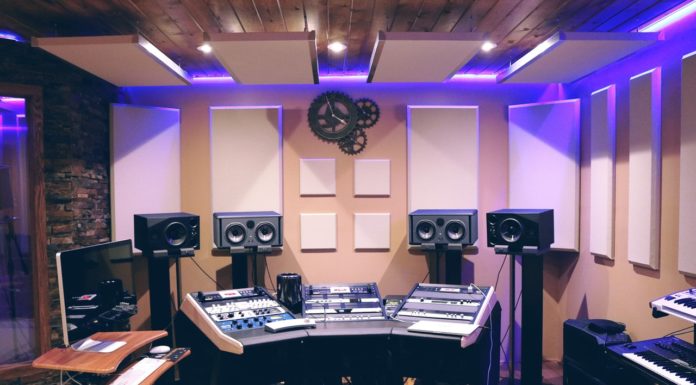
A microphone’s a microphone, right? Not exactly. There are countless models, styles, and features out there. And you’ll want to be aware of them when finding the right mic for your application. This is especially true when picking a mic for live vocals. From their sound to how well they reject handling noise, it’s essential to understand these differences so you can find the best live vocal mic.
Many who don’t want to get into the specifics can grab the ubiquitous Shure SM58 and call it good. That works for thousands of music makers around the world. The ’58 is a trusted stand-by that always gets the job done. But with just a little research, you’ll find many other fantastic options that will be better suited for you.
Here, our bet live vocal mic comparison will outline four pro-level options that we recommend. We’ll dig into what makes a microphone a great live vocal mic. And we’ll highlight some unique features to look for when choosing the best live vocal mic for you.
Looking for another type of mic? Check out our Microphone 101 Guide.
What makes a good live vocal microphone?
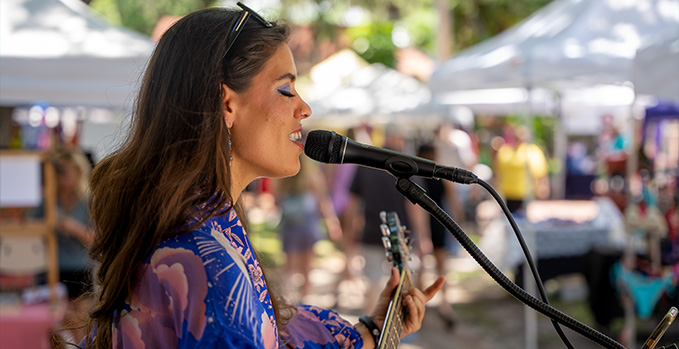
Theoretically, any vocal microphone can be used on stage, thus making it a live vocal microphone. But plug in a high-end ribbon mic before a raging metal band, and you’ll quickly realize why the designation exists.
You see, live vocal mics are highly specialized designs that combine a series of benefits, making them ideally suited for what live performances throw at them.
Here are the most important benefits to consider when selecting your microphone for live vocals.
Sound quality
Live microphones are tuned to emphasize the frequencies you need onstage while rejecting others that can cause problems. For example, while condenser mics offer a wide frequency response and capture depth and detail, they can cause terrible feedback and rumble issues during a live performance. On the other hand, great live mics highlight the frequencies that help the sound source cut through while eliminating the ones that cloud the sonic picture or promote background noise.
Durability
Some studio-based microphones are so fragile they can be ruined by a loud noise. Not live vocal mics. Durability is a vital component of their design. Since performance stages and the rigors of the road can be murder on musical equipment, these mics are made for the job. From being dropped or having beer spilled on them to being tossed around in the back of a van, your live vocal microphone can take it.
Handling noise
Another important consideration when selecting a live mic is handling noise. Unlike recording in a studio, live mics are usually held in a performer’s hand or mounted on a shaky stage. Add the rings on the singer’s fingers tapping against the mic’s body, and all of that can find its way into the audio signal. It’s not long before the sound engineer throws you some pretty angry looks.
Luckily, most live mics take this into consideration. Isolating the capsule (the part of the mic that picks up sound) from the rest of the mic’s body significantly reduces handling noise. But not all mics are created equal here. You’ll want to find the one that works for you.
Noise rejection
Along with rejecting handling noise, good live vocal mics also only pick up the sound you want. This is usually done with the mic’s polar pattern. Not as complicated as it sounds, the polar pattern is simply the space the mic is listening to.
Most live vocal mics feature a cardioid polar pattern. This heart-shaped pattern emphasizes what’s coming from directly in front of the mic, namely the singer. Other background noise coming from the stage won’t make it into the microphone.
Output level
Most live microphones are dynamic microphones. Officially, this means they translate sound through electromagnetism – think like a speaker but in reverse. Unofficially, a dynamic microphone is a passive design without any internal or external power source required.
Convenient for performance? Definitely. But because they aren’t powered, dynamic mics don’t tend to offer as much output as some condenser microphones. The gain on the mic preamp needs to be pushed harder to mitigate this. Sometimes this can increase unwanted noise in the signal.
Different live mics deal with this conundrum in different ways. Some crank their output as much as possible, and others, like the Sterling P30 we’ll look at here, include an active (powered) circuit that significantly increases their output. This gives the mic pres a lot more to work with.
4 popular vocal microphones for on stage
While many think of live vocal mics as a barebones family of microphones, as you can tell, they have a lot of specialized characteristics. The following four examples are perfect illustrations of these features and are great go-to’s when it’s time to hit the stage.
Side-by-Side Product Comparison
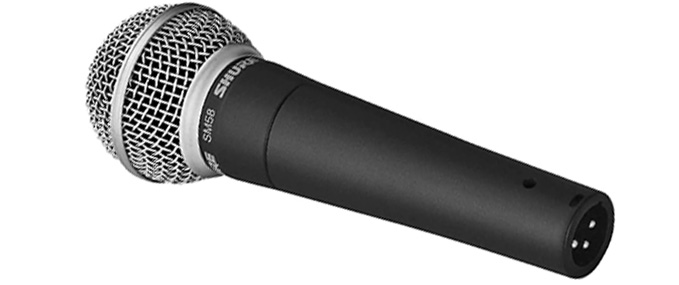 |
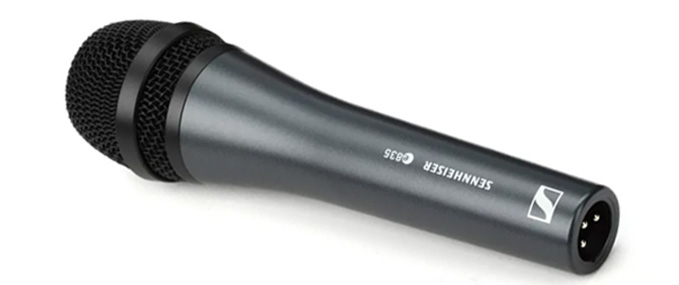 |
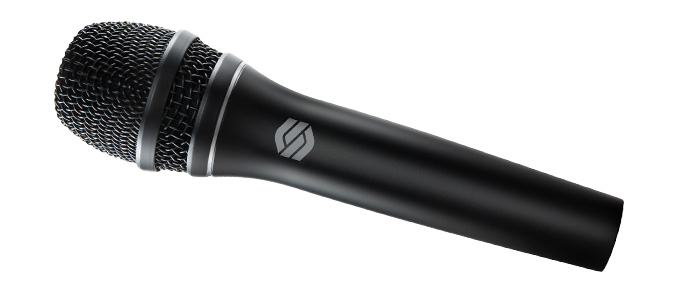 |
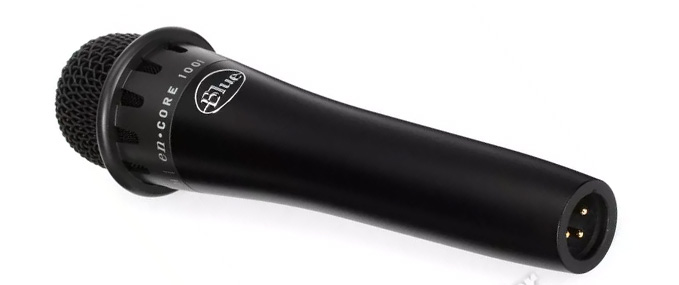 |
|
|---|---|---|---|---|
Product |
Shure SM58 | Sennheiser e835 | Sterling P30 | enCORE 100i |
Key Features |
Astounding durability & handles extremely loud sources | “Pre-EQ’d” voice works beautifully with vocals | Dynamic Drive technology increases output and clarity | “Pre’EQ’d” voice for use with a variety of instruments & vocals |
Type |
Passive Dynamic | Passive Dynamic | Active Dynamic | Active Dynamic |
Polar Pattern |
Cardioid | Cardioid | Cardioid | Cardioid |
Frequency Range |
50Hz to 15kHz | 40Hz to 16kHz | 50Hz to 18kHz | 50Hz to 16kHz |
Size |
1.1 x 7.4 in | 1.8 x 7.1 in | 7.2 in | 0.9 x 6.9 in |
weight |
10.5 oz | 11.6 oz | 10.5 oz | 12 oz |
Shure SM58
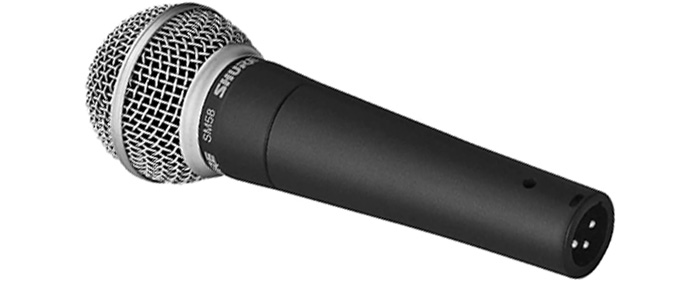
The Shure SM58 is a bonafide classic. First introduced in the 1960s, this passive dynamic mic set the industry standard for stage-ready designs. They’re so popular; they’re the microphone even nonmusicians think of when you say “microphone.”
With a rolled-off low end and a present high-midrange, the SM58 is perfect for pushing live vocals over the din with excellent intelligibility. And their cardioid polar pattern rejects anything other than the performance in front of them.
SM58s are also famous for their durability. They’ve been dunked in beer glasses, run over in trucks, and used to hammer a nail while still maintaining flawless performance. At less than $100 a pop, it’s easy to see why they remain the standard for all live vocal microphones.
- EXEPTIONAL VOCAL PERFORMANCE - The SM58-LC delivers high-quality vocal reproduction, thanks to its...
- INDUSTRY STANDARD - The first choice for performers around the globe, the SM58 Dynamic Vocal...
- CLARITY & CARE - The uniform cardioid polar pattern reproduces every note as it was intended,...
Sennheiser e835 Cardioid Dynamic

Introduced in the 1980s, the Sennheiser e835 is the number two selling live mic on the market. Having the ’58 as a springboard, it ups the game with a more sculpted voice and equally rugged construction while still hitting a similar price point.
If the Shure SM58 is the original Hummer, the Sennheiser e835 is the H2. In many ways, it improves on the original design, offers its users a more luxurious experience, and is used for the same reasons (we’re talking toting well-to-do families around, not going to war). But like the H2, it struggles to reach the legendary status the other possesses.
Sonically, the e835 is known to have a more extended top end giving more detail to the sound source. Its low end is shaped to maintain warmth while rejecting rumble and handling noise. And the midrange is even throughout. It’s a sort of “pre-EQ’d” character that sound engineers love. It’s also a fantastic option for quieter sounds and vocalists who put a premium on detail.
- Cardioid pickup pattern: Provides good signal isolation and feedback rejection, enabling higher...
- Balanced frequency response: Maintains signal quality when moving on and off axis during performance
- Gentle presence boost: Ensures vocal clarity and projection
Sterling P30 Active Microphone

The SM58 and e835 are known quantities. They have all but owned the live mic segment for decades. But that doesn’t mean there aren’t other (maybe better?) options out there. The Sterling P30 Active Microphone is a perfect example.
The P30 takes aim at the industry stalwarts with a design that goes toe-to-toe with theirs in nearly every way. It’s tuned for the stage, it rejects noise with the best of them, and Sterling calls it “…nearly indestructible.” But, unlike the previous two, the P30 does it all with Sterling’s DynamicDrive Technology.
Essentially an onboard active preamp, DynamicDrive takes incoming 48v phantom power – which most mic preamps and mixers offer – and amplifies the mic’s signal. The result is that your mic preamp gets plenty of power to work with, which allows it to do its job in the sweet spot; not too much power, not too much noise.
Did we mention the Sterling P30 is also lower priced than its competitors?
Check out the Sterling P30 at Guitar Center or Musicians Friend.
Blue Microphones enCORE 100i
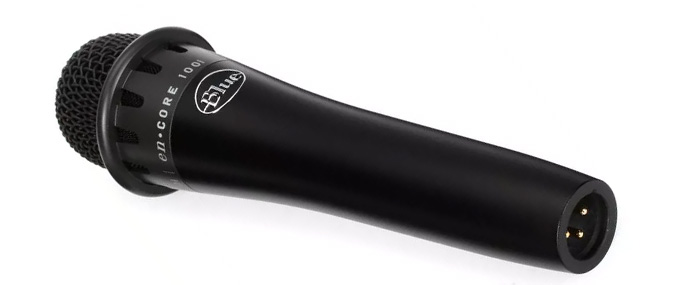
Blue mics are extremely popular in recording studios and with content creators. Not only do they sound great, but many of them boast an inimitable spherical shape that helps them stand out from the pack. The enCORE 100i isn’t one of them. And that might be why it is a criminally underrated option.
While the three microphones above are all known for use with live vocals, a truly great live mic should also be useful on instruments. This is where the Blue Microphone enCORE 100i shines.
Like the others, it’s a rugged design meant for performance. But this live mic’s voice is something special. On electric guitars, it has the same midrange presence as a Shure SM but smooths out the cutting highs and warms up the bass. It gives acoustic guitar plenty of power and crisp treble. But it’s not just for guitarists. Read any reviews, and you’ll find it’s a favorite among horn and string players as well.
Of course, we’re talking about live vocal microphones here. So, you’ll be glad to know the enCORE 100i also gives singers a full and similarly “pre-EQ’d” tone as the e835. All of that, and it’s still under $100.
- Studio grade dynamic instrument microphone
- Specially designed and tuned capsule with custom diaphragm, venting design and coil windings
- Custom-tuned acoustic circuit with transformer and high-pass filter
Live Mic Summary
SM58
- The standard by which all other live mics are judged
- Passive dynamic design
- Astounding durability and reliability
- Rolled-off lows, present high-mids
- Cardioid polar pattern rejects stage noise
- Handles extremely loud sources
- 50Hz-15kHz
Sennheiser e835 Cardioid Dynamic
- The number two selling live mic since the 1980s
- Passive dynamic design
- “Pre-EQ’d” voice that’s extremely popular with vocalists
- Rugged construction
- Warmer lows, even mids, detailed highs
- 40Hz-16kHz
Sterling P30 Active Microphone
- Active, dynamic design
- DynamicDrive Technology increases output and clarity
- Rugged construction
- Cardioid polar pattern
- Rejects noise and proximity effect
- Affordable
- Frequency range: 50Hz to 18kHz
Blue Microphones enCORE 100i
- Voiced for use with a wide variety of instruments
- “Pre-EQ’d” voice that works beautifully with vocals
- Rugged construction
- Frequency range: 50Hz-16kHz
The Mic Drop
So much time and consideration go into debating studio-style microphones that live vocal mics can often be forgotten. Most people just grab a Shure SM58, and they’re good. But I hope I’ve shed some light on some other options out there.
While the SM58 is set to remain the standard for years to come, you may prefer the Sennheiser’s added detail, the P30’s extra horsepower, or the enCORE 100i’s beautifully tailored voice. And there are a whole lot more options than that!
But no matter which of these best live vocal mic you choose, make sure you look for the features that suit your needs. And unless those include hammering nails before the gig, you might not choose the SM58 after all.






